Some PC users have reported cases whereby the Security Intelligence Update for Microsoft Defender Antivirus fails to work on their Windows 11 or Windows 10 computer and in Windows Security app. Under the Virus & threat protection area, Engine unavailable message is shown. If you are facing a similar issue, then this post is intended to help you with solutions you can apply to resolve the issue.
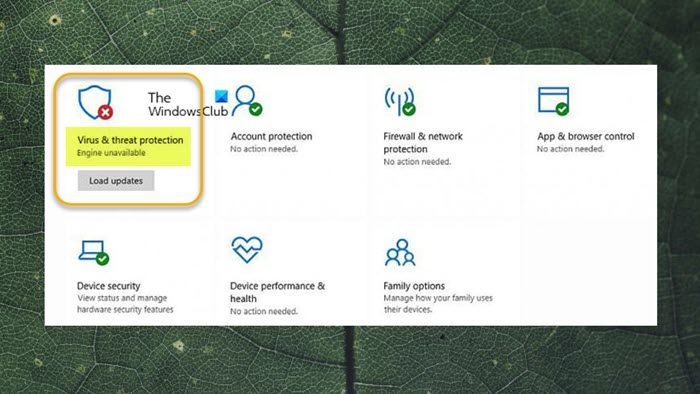
When this issue occurs on your system, you may get the generic Windows Update error code 0x80070643 or the more specific Windows Defender Update error code 0x80070643.
Virus & threat protection Engine unavailable
Affected PC users that were faced with the Virus & threat protection Engine unavailable issue after Windows Defender updates failed to install on their Windows 11/10 device also reported that clicking the Load updates button as shown in the lead-in image above did not do anything as the updates tried to install but returned to the load updates status.
In any case, our recommended solutions presented below should help PC users that have encountered this problem on their system easily resolve the issue to ensure Windows Defender definition updates are installed as and when due to keep their devices protected.
- Run Windows Update Troubleshooter
- Manually download and install the Windows Defender update
- Update Windows Defender via Command Prompt or PowerShell
- Reset Windows Security
- Reset or In-place Upgrade Repair Windows 11/10
Let’s look at the description of the process as it relates to each of the listed solutions.
1] Run Windows Update Troubleshooter
Because the definition updates for Microsoft Defender are shipped through Windows Update, and since the issue at hand is update-related, you can first run the Windows Update Troubleshooter by following the steps below and see if that helps before you dive in further with other troubleshooting steps.
Windows 11
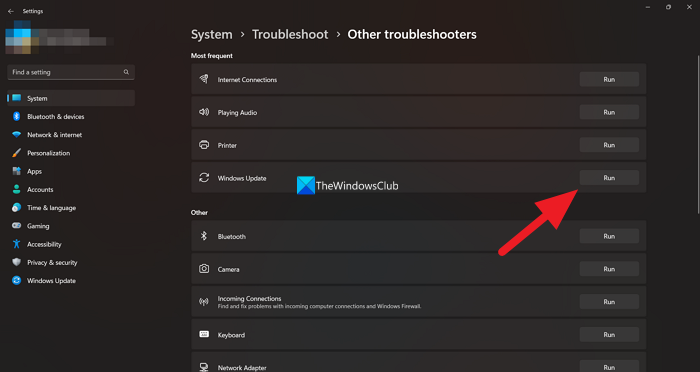
- Press the Windows key + I to open the Settings app.
- Navigate to System > Troubleshoot > Other troubleshooters.
- Under the Most frequent section, find Windows Update.
- Click the Run button.
- Follow on-screen instructions and apply any recommended fixes.
Windows 10
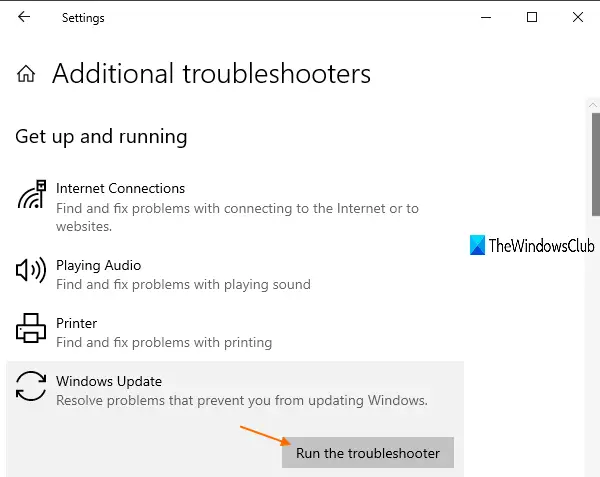
- Press the Windows key + I to open the Settings app.
- Go to Update and Security.
- Click the Troubleshooter tab.
- Scroll down and click on Windows Update.
- Click the Run the troubleshooter button.
- Follow on-screen instructions and apply any recommended fixes.
Normally, this task should be enough to resolve most cases of Windows update-related errors. In other cases, you can also run the Microsoft Support and Recovery Assistant designed to help PC users resolve Windows update installation issues.
Read: How to use Windows Security in Windows 11 for best protection
2] Manually download and install the Windows Defender update
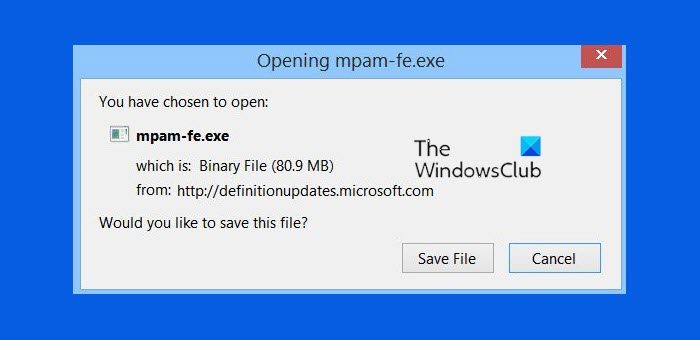
What’s important to know is the security intelligence is downloaded automatically by Windows Defender when it’s released. This way, the latest virus definitions are available on your device. However, if the definition update fails to install automatically, you can manually download and install the Windows Defender update.
To do this, you first need to check whether you are using a 32-bit or 64-bit version of Windows. Once you know the OS architecture, you can proceed to download the installers from the following links: 32-bit | 64-bit | ARM – then double-click the mpam-fe.exe file to run the package. The update links provided above point to the latest definition updates currently available for Windows Defender. Alternatively, you can identify the KBnumber for the Windows Defender definition update that failed in Windows Update history under the Definition Updates section, then head over to Microsoft Update Catalog and search and download the standalone installer for the update package. Once downloaded to your system, you can run the installer to apply the update.
Keep in mind you may not see any progress indicator or get a confirmation after the update installs. So, you may have to restart your PC if after about 30-45 minutes the Virus & threat protection status doesn’t show No action needed with the green tick.
3] Update Windows Defender via Command Prompt or PowerShell
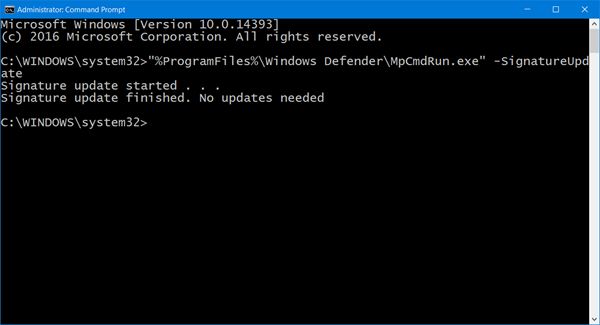
There may be no noticeable advantage over the GUI interface, but since both CMD prompt and PowerShell are barebones, it’s likely operations initiated in the environment is less prone to glitches due to too many or unnecessary moving parts or processes. So, you can follow the instructions in the guide on how to update Windows Defender definitions using Windows PowerShell or the guide on how to run Update Definitions in Windows Defender using MpCmdRun.exe and see if the operation completes without issues.
4] Reset Windows Security
If Virus & threat protection isn’t working normally as it should on your Windows 11/10 PC, maybe due to system corruption which is likely the cause of the issue at hand, you can quickly reset the Windows Security app and see if that resolves the issue. To perform this task, follow these steps:
- Press the Windows key + R to invoke the Run dialog.
- In the Run dialog box, type wt.exe and hit Enter to open Windows Terminal.
- In the PowerShell console, type in or copy and paste the command below and hit Enter.
Get-AppxPackage *Microsoft.Windows.SecHealthUI* | Reset-AppxPackage
- Exit Windows Terminal once the command executes.
Related read: Reset Windows Security Settings to default values
5] Reset or In-place Upgrade Repair Windows 11/10
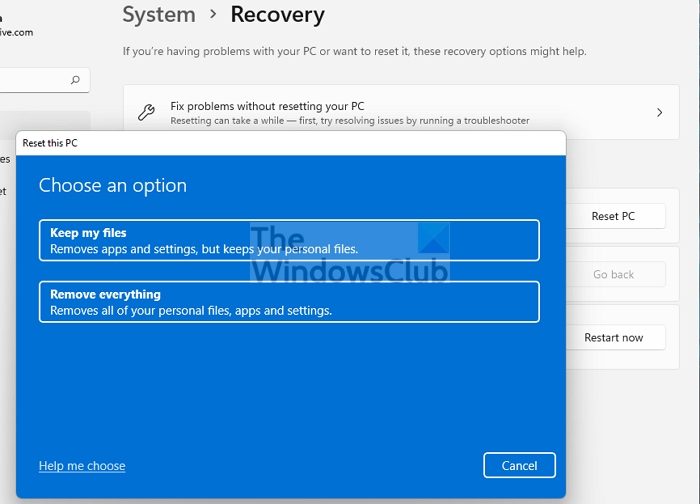
If nothing else works for you to resolve the issue in focus, then it’s likely a severe system corruption that has impacted the normal functionality of Windows Defender to install definition updates on your device. In this case, and as a last resort, you can reset the PC or perform an in-place upgrade repair. Either of the tasks will restore the OS health by replacing corrupted system files critical to the smooth operation of Windows 11/10.
I hope you find this post helpful!
Why can’t I open my Virus and threat protection?
If Virus & threat protection has stopped, in most cases, it’s usually due to you having some corrupted system files, which you can attempt a fix by running an SFC and DISM scan to look for any system-wide corruption and repair it to resolve some difficulties, such as the Windows Security app issue.
Read: Quick Scan not working in Windows Defender
How do I restore Virus and threat protection?
If on your Windows 11/10 device, you are certain a quarantined file by Windows Defender is not a threat, you can restore the item by following these steps:
- Open Windows Security.
- Select Virus & threat protection and then click Protection history.
- In the list of all recent items, filter on Quarantined Items.
- Select an item you want to keep and take an action, such as restore.
Now read: Windows Defender: This setting is managed by your administrator.